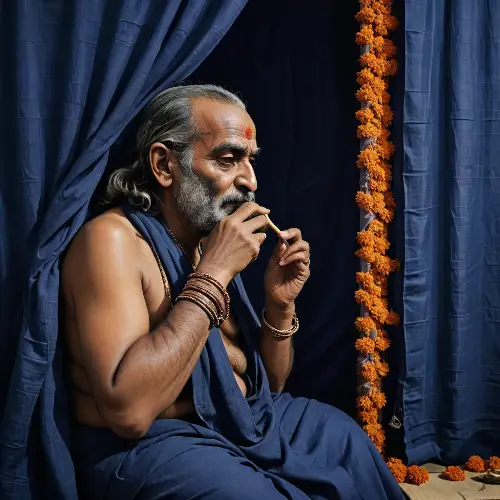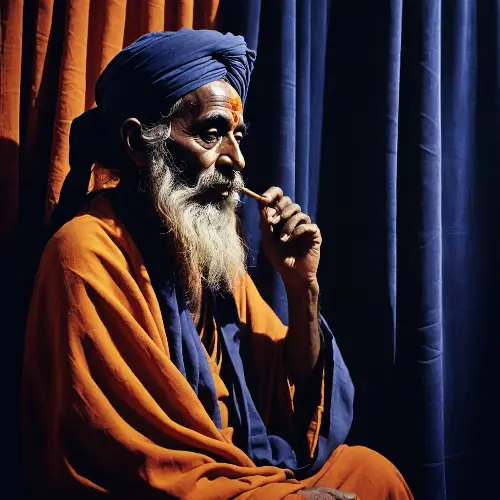Mahrashtrian Freedom fighters having discussions in Kesari Printing press in Pune in the year 1881. The room has old Pune vibes, with old furnitures and old printing press printing newspaper sepia and blue hues, Ultra HD 1080p, high resolution photographs
More Like This
Mahrashtrian Freedom fighters having discussions in Kesari Printing press in Pune in the year 1881. The room has old Pune vibes, with old furnitures and old printing press printing newspaper sepia and blue hues, Ultra HD 1080p, high resolution photographs
Marathi people having discussions in Kesari Printing press in Pune in the year 1881. The room has old Pune vibes, with old furnitures and old printing press printing newspaper sepia and blue hues, Ultra HD 1080p, high resolution photographs
Hindu Freedom fighters having working together with Bal Gangadhar Tilak Kesari newspaper Printing press in Pune in the year 1881. The room has old Pune vibes, with people wearing traditional indian marathi attire of that time with old furniture and old hand press printing press machine that printing newspaper sepia and blue hues, Ultra HD 1080p, high resolution photographs
Marathi Freedom fighters having working together with Bal Gangadhar Tilak Kesari newspaper Printing press in Pune in the year 1881. The room has old Pune vibes, with people wearing traditional indian marathi attire of that time with old furniture and old hand press printing press machine that printing newspaper sepia and blue hues, Ultra HD 1080p, high resolution photographs
In 1881, Deccanese freedom fighters held discussions in Kesari Printing Press in Pune. People are wearing Mahrattha dress code with puneri pagdi. The room had old Pune vibes, with old furniture and an old printing press printing newspapers in sepia and blue hues. The Kesari Printing Press was founded by Lokmanya Bal Gangadhar Tilak, a prominent leader of the Indian Independence movement, and was used to print his Marathi newspaper, Kesari. Today, Kesari continues to be published by the Kesari Maratha Trust and Tilak's descendants 1 2 . The Kesari Wada, located in Narayan Peth, Pune, was the headquarters of Kesari and Mahratta, Tilak's two newspapers. The Kesari Wada is now a museum that houses the first printing press for Kesari, numerous photographs and paintings, Tilak's genealogical table, rare photos of freedom fighters, and an antique Kesari printing press that was used to print the early issues of Kesari by hand
Hindu Marathi Freedom fighters having working together with Bal Gangadhar Tilak Kesari newspaper Printing press in Pune in the year 1881. The room has old Pune vibes, with people wearing traditional indian marathi attire of that time with old furniture and old hand press printing press machine that printing newspaper sepia and blue hues, Ultra HD 1080p, high resolution photographs
In 1881, Mahrattha freedom fighters held discussions in Kesari Printing Press in Pune. People are wearing Mahrattha dress code with puneri pagdi. The room had old Pune vibes, with old furniture and an old printing press printing newspapers in sepia and blue hues. The Kesari Printing Press was founded by Lokmanya Bal Gangadhar Tilak, a prominent leader of the Indian Independence movement, and was used to print his Marathi newspaper, Kesari. Today, Kesari continues to be published by the Kesari Maratha Trust and Tilak's descendants 1 2 . The Kesari Wada, located in Narayan Peth, Pune, was the headquarters of Kesari and Mahratta, Tilak's two newspapers. The Kesari Wada is now a museum that houses the first printing press for Kesari, numerous photographs and paintings, Tilak's genealogical table, rare photos of freedom fighters, and an antique Kesari printing press that was used to print the early issues of Kesari by hand
Maharashtrian people wearing tradition Pune Marathi attire having discussions in Kesari Printing press in Pune in the year 1881. The room has old Pune vibes, with old furnitures and old printing press printing newspaper sepia and blue hues, Ultra HD 1080p, high resolution photographs
In 1881, Marathi freedom fighters held discussions in Kesari Printing Press in Pune. The room had old Pune vibes, with old furniture and an old printing press printing newspapers in sepia and blue hues. The Kesari Printing Press was founded by Lokmanya Bal Gangadhar Tilak, a prominent leader of the Indian Independence movement, and was used to print his Marathi newspaper, Kesari. Today, Kesari continues to be published by the Kesari Maratha Trust and Tilak's descendants 1 2 . The Kesari Wada, located in Narayan Peth, Pune, was the headquarters of Kesari and Mahratta, Tilak's two newspapers. The Kesari Wada is now a museum that houses the first printing press for Kesari, numerous photographs and paintings, Tilak's genealogical table, rare photos of freedom fighters, and an antique Kesari printing press that was used to print the early issues of Kesari by hand
In 1881, Marathi freedom fighters held discussions in Kesari Printing Press in Pune. The room had old Pune vibes, with old furniture and an old printing press printing newspapers in sepia and blue hues. The Kesari Printing Press was founded by Lokmanya Bal Gangadhar Tilak, a prominent leader of the Indian Independence movement, and was used to print his Marathi newspaper, Kesari. Today, Kesari continues to be published by the Kesari Maratha Trust and Tilak's descendants 1 2 . The Kesari Wada, located in Narayan Peth, Pune, was the headquarters of Kesari and Mahratta, Tilak's two newspapers. The Kesari Wada is now a museum that houses the first printing press for Kesari, numerous photographs and paintings, Tilak's genealogical table, rare photos of freedom fighters, and an antique Kesari printing press that was used to print the early issues of Kesari by hand
Lokmanya Bal Gangadhar Singh having discussions in Kesari Printing press in Pune in the year 1881. The room has old Pune vibes, with old furnitures and old printing press printing newspaper sepia and blue hues, Ultra HD 1080p, high resolution photographs
Lokmanya Tilak and the Power of the Press: Explore the life and legacy of Lokmanya Tilak, a prominent Indian nationalist and freedom fighter, as he works in his printing press to spread his message of independence. Through an Ultra HD 1080p photograph, witness the tools and techniques used by Tilak to disseminate his ideas and inspire a nation.\" This prompt provides a neutral and informative framework for further discussion or exploration of Lokmanya Tilak's role in India's struggle for independence and the importance of the press in shaping public opinion.
wide room with desk in the centre with a epic book in indian style from 50s
wide room with desk in the centre with a epic book in indian style from 50s
follow this image in indian style from 50s https://cdn.discordapp.com/attachments/1103708504142925824/1195051224362401882/wide_room_with_desk_in_the_centre_with_a_epic_book_in_indian_style_from_50s_seed-0ts-1704992814_idx-0.png?ex=65b2952e\u0026is=65a0202e\u0026hm=1927ea63398a189e21829f03206dc2efa80b2b4636dd78c72dc74b70a2214117\u0026
follow this image in indian style from 50s https://cdn.discordapp.com/attachments/1103708504142925824/1195051224362401882/wide_room_with_desk_in_the_centre_with_a_epic_book_in_indian_style_from_50s_seed-0ts-1704992814_idx-0.png?ex=65b2952e\u0026is=65a0202e\u0026hm=1927ea63398a189e21829f03206dc2efa80b2b4636dd78c72dc74b70a2214117\u0026
In the heart of political upheaval during the Indian independence movement, Bhagat Singh and Batukeshwar Dutt ignited a historic moment by throwing smoke bombs in the Assembly hall. As they embarked on their midjourney towards dissent and rebellion, explore the consequences of their bold act, the reactions it triggered, and the evolving dynamics of the struggle for independence. Delve into the motives behind their revolutionary choice and the subsequent ripples it sent through the pages of history. Uncover the untold tales of this pivotal midjourney in the lives of two iconic freedom fighters, shaping the narrative of resistance and sacrifice during a critical juncture in India's fight for freedom. dark blue hues, Ultra HD 1080p, high resolution photographs
1850's newspaper printing press, typeset letters in slot, shown as old photo, --ar 16:9
1850's newspaper printing press, typeset letters in slot, shown as old photo, --ar 16:9
follow this image in black and white https://cdn.discordapp.com/attachments/1103708504142925824/1195051224362401882/wide_room_with_desk_in_the_centre_with_a_epic_book_in_indian_style_from_50s_seed-0ts-1704992814_idx-0.png?ex=65b2952e\u0026is=65a0202e\u0026hm=1927ea63398a189e21829f03206dc2efa80b2b4636dd78c72dc74b70a2214117\u0026
old copies of books in Hindi of Geeta, Upanishads and Vedanta with a personal library in the bakground
Subhash Chandra Bose dressed as a sanyasi wearing saffron sanyasi cloth, reading Bhagwat Gita kept on Rehal seated on a tiger-rug in his room, 1080p, high resolution photographs
Subhash Chandra Bose dressed as a sanyasi wearing saffron sanyasi cloth, reading Bhagwat Gita kept on Rehal seated on a tiger-rug in his room, 1080p, high resolution photographs
Subhash Chandra Bose dressed as a sanyasi wearing saffron sanyasi cloth, reading Bhagwat Gita sitting on a tiger skin mat in his room, 1080p, dark blue hues, high resolution photographs
Subhash Chandra Bose dressed as a sanyasi wearing saffron sanyasi cloth, reading Bhagwat Gita sitting on a rug made of Tiger skin in his room, 1080p, dark blue hues, high resolution photographs
Subhash Chandra Bose dressed as a sanyasi wearing saffron sanyasi cloth, reading Bhagwat Gita seated on a tiger-rug in his room, 1080p, dark blue hues, high resolution photographs
Indian Sadhu Gumnaami Baba, sitting behind the cottom saffron curtain, sipping pipe, Indira Gandhi talking to him from outside the curtain, 1080p ultra realistic, dark blue hues, photograph, Year 1970, side view, nostalgic vibe
A colorful and dynamic scene of Indian school students and professionals gathered together, their animated conversations and exchanges representing the diverse and creative ways in which they connect and network.
A colorful and dynamic scene of Indian school students and professionals gathered together, their animated conversations and exchanges representing the diverse and creative ways in which they connect and network.
A colorful and dynamic scene of Indian school students and professionals gathered together, their animated conversations and exchanges representing the diverse and creative ways in which they connect and network.
young Subhash Chandra Bose dressed as a sanyasi wearing saffron sanyasi cloth, reading Bhagwat Gita kept on wooden book holder seated on floor in his room, room has dark Hindu Tantra Vibes, Side view, Kaali Maa photo in background, 1080p, high resolution photographs
Subhash Chandra Bose dressed as a sanyasi wearing saffron sanyasi cloth, reading Bhagwat Gita kept on book holder seated on a tiger-rug in his room, room with Hindu Tantra Vibes, Kaali Maa photo in background, 1080p, high resolution photographs
young Subhash Chandra Bose dressed as a sanyasi wearing saffron sanyasi cloth, reading Bhagwat Gita kept on book holder seated on a tiger skin -rug in his room, room with Hindu Tantra Vibes, Side view, Kaali Maa photo in background, 1080p, high resolution photographs
Subhash Chandra Bose dressed as a sanyasi, reading Bhagwat Gita sitting on a tiger skin in his room, 1080p, dark blue hues, high resolution photographs
young Subhash Chandra Bose dressed as a sanyasi wearing saffron sanyasi cloth, reading Bhagwat Gita kept on book holder seated on a tiger-rug in his room, room with Hindu Tantra Vibes, Side view, Kaali Maa photo in background, 1080p, high resolution photographs

















































































